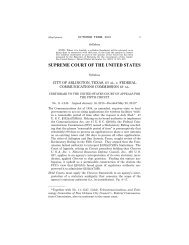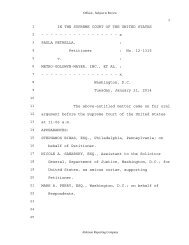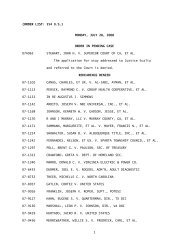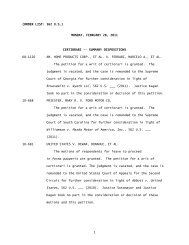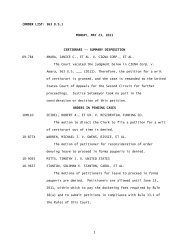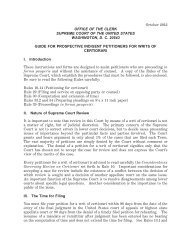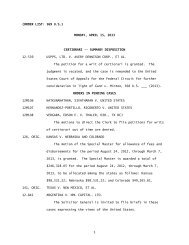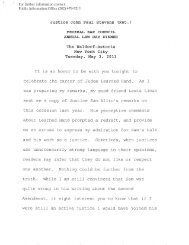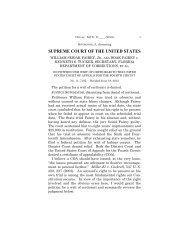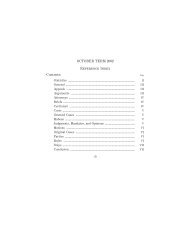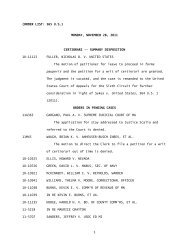12-398 Association for Molecular Pathology v. Myriad Genetics, Inc ...
12-398 Association for Molecular Pathology v. Myriad Genetics, Inc ...
12-398 Association for Molecular Pathology v. Myriad Genetics, Inc ...
You also want an ePaper? Increase the reach of your titles
YUMPU automatically turns print PDFs into web optimized ePapers that Google loves.
6 ASSOCIATION FOR MOLECULAR PATHOLOGY v.<br />
MYRIAD GENETICS, INC.<br />
Opinion of the Court<br />
NO:1, which codes <strong>for</strong> the typical BRCA1 gene. 689 F. 3d,<br />
at 1326, n. 9; id., at 1337 (Moore, J., concurring in part);<br />
id., at 1356 (Bryson, J., concurring in part and dissenting<br />
in part).<br />
Claim 5 of the ’282 patent claims a subset of the data in<br />
claim 1. In particular, it claims “[a]n isolated DNA having<br />
at least 15 nucleotides of the DNA of claim 1.” App. 822.<br />
The practical effect of claim 5 is to assert a patent on any<br />
series of 15 nucleotides that exist in the typical BRCA1<br />
gene. Because the BRCA1 gene is thousands of nucleotides<br />
long, even BRCA1 genes with substantial mutations<br />
are likely to contain at least one segment of 15 nucleotides<br />
that correspond to the typical BRCA1 gene. Similarly,<br />
claim 6 of the ’282 patent claims “[a]n isolated DNA having<br />
at least 15 nucleotides of the DNA of claim 2.” Ibid.<br />
This claim operates similarly to claim 5, except that it<br />
references the cDNA-based claim 2. The remaining claims<br />
at issue are similar, though several list common mutations<br />
rather than typical BRCA1 and BRCA2 sequences. See<br />
ibid. (claim 7 of the ’282 patent); id., at 930 (claim 1 of the<br />
’473 patent); id., at 1028 (claims 1, 6, and 7 of the ’492<br />
patent).<br />
C<br />
<strong>Myriad</strong>’s patents would, if valid, give it the exclusive<br />
right to isolate an individual’s BRCA1 and BRCA2 genes<br />
(or any strand of 15 or more nucleotides within the genes)<br />
by breaking the covalent bonds that connect the DNA to<br />
the rest of the individual’s genome. The patents would<br />
also give <strong>Myriad</strong> the exclusive right to synthetically create<br />
BRCA cDNA. In <strong>Myriad</strong>’s view, manipulating BRCA DNA<br />
in either of these fashions triggers its “right to exclude<br />
others from making” its patented composition of matter<br />
under the Patent Act. 35 U. S. C. §154(a)(1); see also<br />
§271(a) (“[W]hoever without authority makes . . . any<br />
patented invention . . . infringes the patent”).



